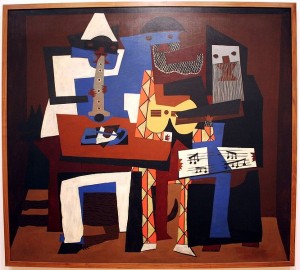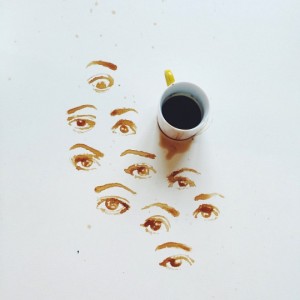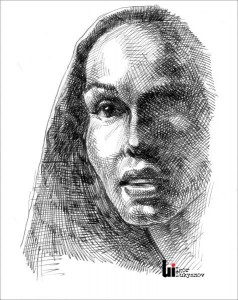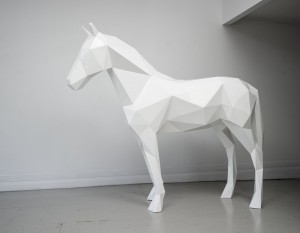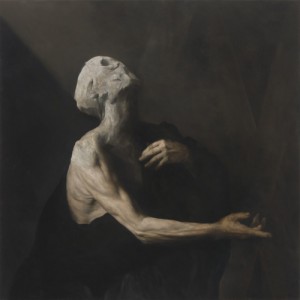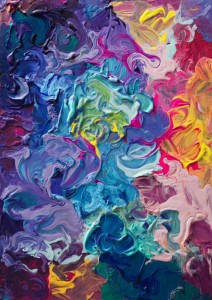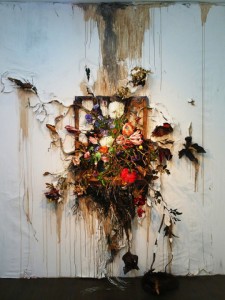Light: Adds brightness or contrast to an object and can evoke different views of the piece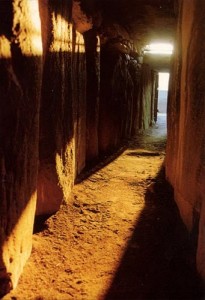
Symmetrical Balance: Each half of an image reflecting the other to create a sense of equilibrium in the work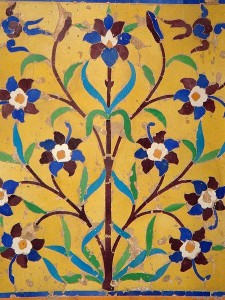
Volume: How much 3D space is taken up by an object
Scale/Proportion: The comparison of size from one object to another
Visual Texture: How something looks like it feels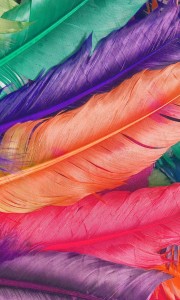 Value: How light or dark something is
Value: How light or dark something is 
Shape: A shape is the area within a 2D space that can be defined by edges, either soft or hard. Shapes are defined or aided by other elements of art such as color, value, texture, and lines.
(Pablo Picasso, “The Three Musicians”)
Within this picture, shapes are utilized by putting together blocks of color, which creates edges for each block by contrasting colors being placed next to one another. Shapes are put together to create the emphasis of the subjects of the piece.
Asymmetry: Lack of equality between different aspects of an art piece across horizontal, diagonal, or vertical planes.
(Giulia Bernardelli, “Untitled Coffee painting”)
This picture has asymmetrical qualitities because the design mimics random coffee splotches which don’t create a coherent symmetrical pattern over a horizontal, vertical, or diagonal line.
Invented Texture: The addition of different materials or artistic techniques to create interesting, obvious texture.
(Igor Lukyanov, “Woman Portrait”)
The use of crosshatching creates an implied texture, but the right side of the woman’s portrait has wide and obvious crosshatching which gives the picture interesting texture.
Plane: An area of a 2D surface having a determined spatial direction and extension.
(Ben Foster, “The White Horse”)
Different planes on the art piece creates facets along the piece that connect to create a 3D effect in the shape of the object.
Space: Distances around and within an object in relation to other components within the art piece. Space can be negative, positive, dimensional, etc.
(Nicola Samori, “L’Occhio Occidentale”)
Negative space contrasted to the paleness of the object creates a gaunt tone shown in the subject. The lack of other objects in the picture provides focus towards the central subject – a gaunt and mutilated person.
Unity/Variety: Unity provides a sense of wholeness in an art piece by pulling together similar elements in a work. Variety is done by contrasting elements within an art piece to create a sense of difference.
(Tanya Shatseva, “Untitled Abstract Painting”)
Texturally this picture has unity by the artist using similar brush strokes, and variety is provided with color and shape of paints and brush strokes.
Emphasis: An area or piece of an art piece that becomes the focal point of a work and that grabs attention from the viewer.
(Valerie Hegarty, “Flower Frenzy”)
Emphasis is provided with texture and color within the center of the picture, which provides a focal point to the viewer, drawing the eye to the center of the picture.

